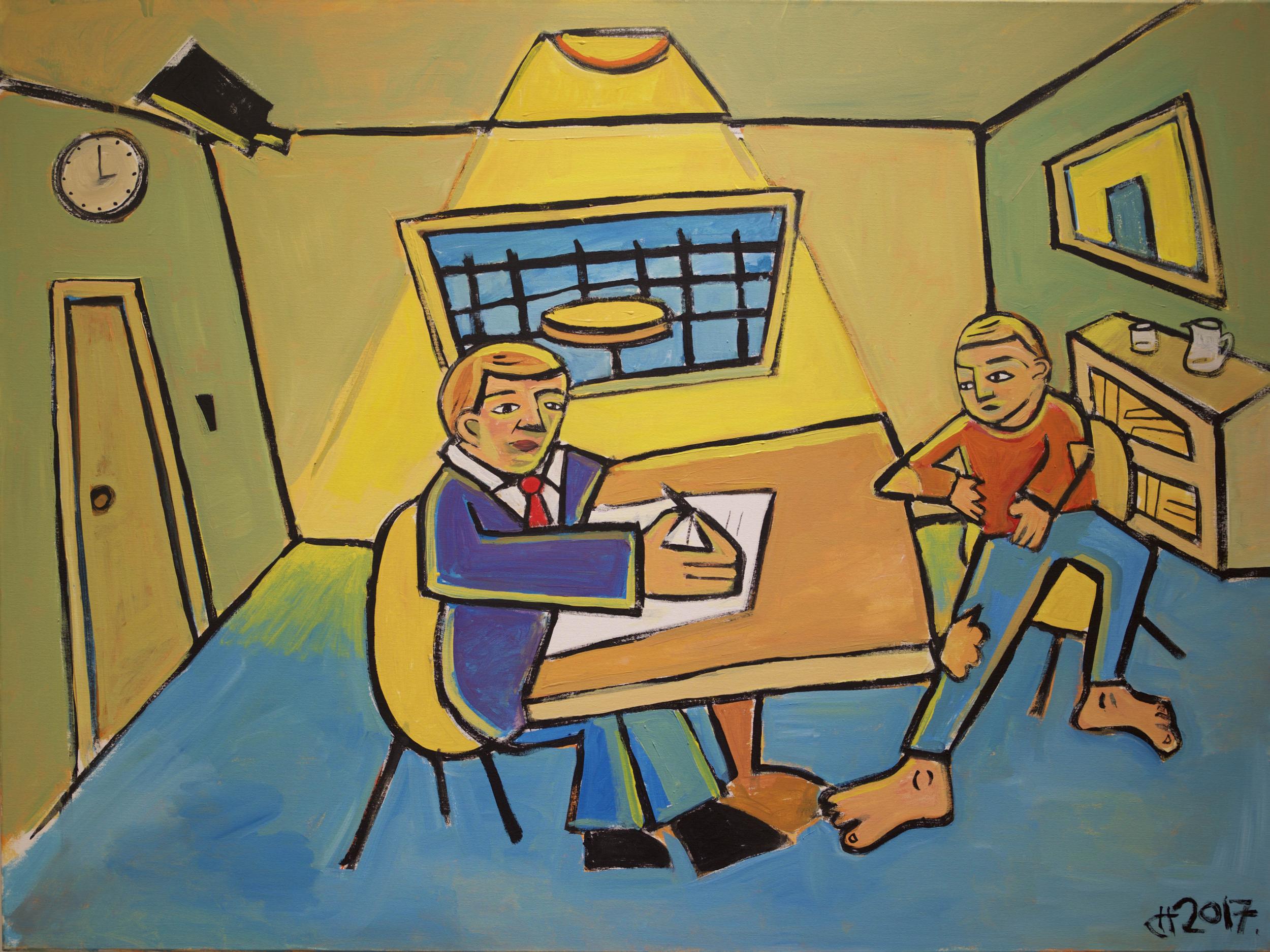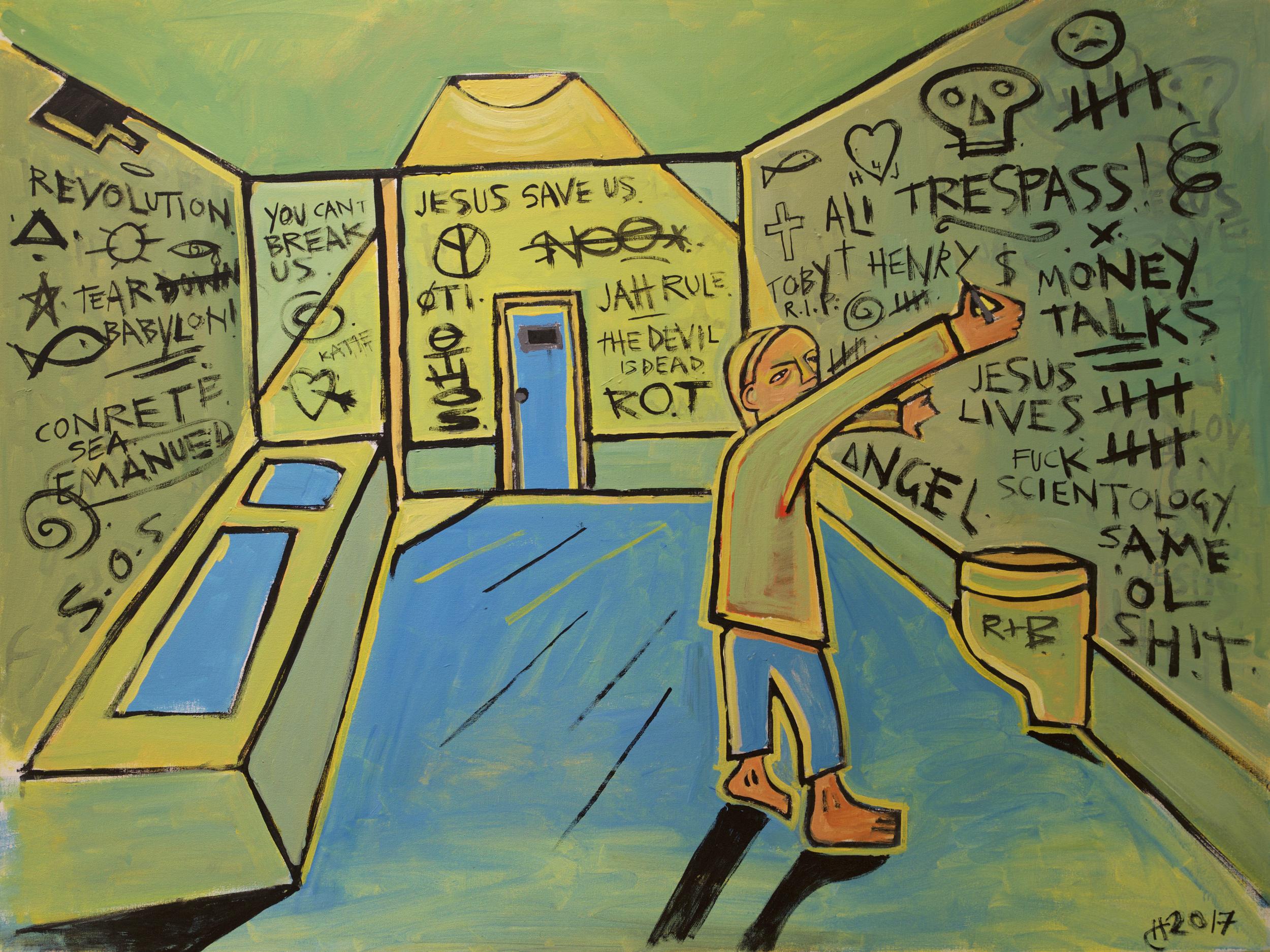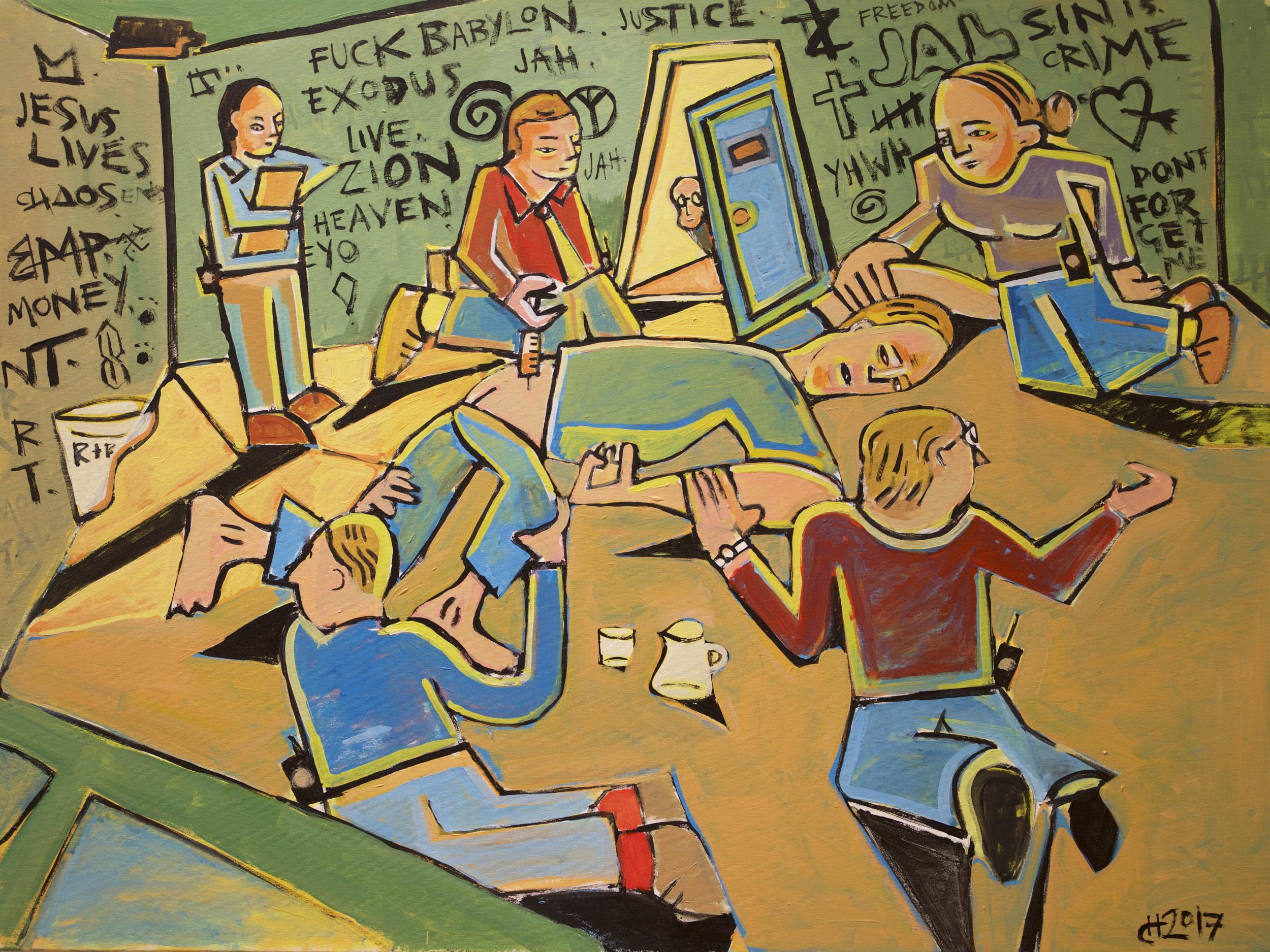Schizophrenia, part two: Patrick Cockburn and his son describe living with mental illness
Our second instalment from Patrick and Henry Cockburn describes the NHS's 'hands-off approach', the probable causes that led to Henry's psychosis and his experience of being sectioned and forcible sedated

Your support helps us to tell the story
From reproductive rights to climate change to Big Tech, The Independent is on the ground when the story is developing. Whether it's investigating the financials of Elon Musk's pro-Trump PAC or producing our latest documentary, 'The A Word', which shines a light on the American women fighting for reproductive rights, we know how important it is to parse out the facts from the messaging.
At such a critical moment in US history, we need reporters on the ground. Your donation allows us to keep sending journalists to speak to both sides of the story.
The Independent is trusted by Americans across the entire political spectrum. And unlike many other quality news outlets, we choose not to lock Americans out of our reporting and analysis with paywalls. We believe quality journalism should be available to everyone, paid for by those who can afford it.
Your support makes all the difference.When it comes to dealing with mental health patients, the National Health Service is not the broken system that critics allege, but it is under-resourced, badly organised and patchy in effectiveness. To know its strengths and weaknesses and navigate them successfully, takes diplomacy, patience and hard work by carers, who are usually parents, children or siblings of somebody suffering from schizophrenia who is incapacitated from doing these things themselves by the severity of their illness.
The most serious mistake Jan and I made in the years we spent trying to help Henry was not to realise for a long time that he was spitting out his medication, which he took in the form of pills and which was the only way to reduce and control his psychosis. The NHS staff in the first two hospitals he was in were surprisingly ineffective in preventing him doing this, though they were otherwise intent on seeking to restore Henry’s mental well-being. He only began to get better in 2007 when he was given the correct medication in dilute form and prevented from going to the bathroom for half an hour after he had swallowed it, so he would not sick it up. This procedure was so simple to carry out and so obviously in his interests that it took us years to take on board that it was not being done and doctors and nurses were resigned to this non-compliance.
This point is not an advertisement for medication as the sole way of treating mental illness, but, in our experience, it was the one effective approach when the psychosis was at its most acute. Only when it had begun to retreat and rationality was returning, did ‘talking therapies’ become feasible. Why did the well-trained medical staff treating Henry not give priority to making sure that he and other patients were taking medication? Primarily, because it was more inconvenient and time-consuming than simply dishing out pills and hoping for the best. This hands-off approach was legitimised by a reluctance among hospital staff to compel patients to do anything even if it was entirely in their own interests, an attitude that was a reaction against the historic reputation of mental asylums as places where inmates were treated by those in charge as somewhere between prison inmates and animals in a zoo.
We made a conscious effort to cooperate and avoid quarrelling with doctors. This sounds obvious enough but it is all too easy to be confrontational when one is fighting for the sanity and survival of a much-loved family member. Cooperation with medical staff is necessary whatever the ailment, but particularly when it comes to mental illness because it may go on for a lifetime and the doctors need to be kept onside. Almost all hospital staff were, in any case, doing their best in grappling with an intractable illness, the cause of which is little understood. “We don’t know what it is, but, surprisingly, we do know a bit about how to treat it,” said a consultant to a friend whose son had just been diagnosed with schizophrenia.
Henry would appeal every six months against his ‘sectioning’ to an independent tribunal and was turned down each time because he would not show ‘insight’ into his condition by admitting that the ‘voices’ he heard were not real. There was something hypocritical about this because nobody – distinguished consultants as much as patients – really understood schizophrenia. In any case, Henry’s ‘voices’ were for him part of a magical experience which he was not going to denounce as fantasy.
The best time to deal with schizophrenia should be to catch it at an early stage of its development and avert it entirely or prevent it getting worse. Parents blame themselves for not spotting early symptoms or sending their child to the wrong school or making some other mistake that seems culpable in retrospect. Such self-punishment is always useless, but this is particularly true in the case of schizophrenia because nobody knows what mix of genetic proclivity and adverse external stimuli will combine to capsize the mind. There is a hereditary component, but most of those afflicted have no history of mental illness in their family. Social pressures stemming from isolation, poverty or immigration might be responsible, or toxic personal experience such as child abuse.

In retrospect, there were two aspects of Henry’s life which probably helped to bring about his breakdown which we might have been able to do something about. We did not know that he was taking so much cannabis – often as many as four or five spliffs a day by his own account – from the age of 14. Researchers have established with a fair degree of certainty that heavy use of cannabis before the age of 18 markedly increases the risk of schizophrenia. But there were few signs that anything was going radically wrong in Henry’s life: he was untidy, withdrawn and occasionally cranky, but what teenager is not? I also did not take on board the vulnerability and fragility of late teenagers after leaving school or realise that this was the age when young men were most likely to be diagnosed with schizophrenia.
Henry only just survived his years in hospital, unlike many of his fellow patients. His paintings of life in a mental hospital are grim, though they are also unexpectedly buoyant and colourful. For five years he used to experience cycles of recovery and relapse, but each time the recovery was less and the relapse worse. There were times when Henry was deeply depressed though he always showed a certain resilience and hopefulness. The mental hospitals where he spent so many years could and should have been better run, but, for all their shortcomings, they did save his life.
Surviving mental illness by Henry Cockburn
At Brighton I didn’t last long. I went back to Canterbury to live at my mother’s and father’s house. I went for massive excursions in and around Canterbury. I had a weird diet – not only being totally vegan, but also l gave up raisins, potatoes, even rice. My mother was very worried about me, and joined a mental health group for the parents of those who suffered from mental illness. My father had just joined a think tank in Washington DC for three months – this was when everything came to a head.
It was around February time. I had had a restless night – without a wink of sleep. I got up and climbed over the back-garden wall, which overlooked a car park. Then I climbed over another wall where there were excavations going on. I hid in a shelter made of wood where I was very visible, but the builders didn’t seem to notice me. I climbed into a neighbour’s garden and took my trousers off. The neighbour walked into the garden, lit a cigarette, turned around and saw me. He didn’t say anything, and just went back into the house.
Five minutes went by and the police turned up. They questioned me and went around to my mother’s house, where she told them that I was a schizophrenic. Next thing they drove me to hospital. I was given a Section Three immediately, meaning I would be kept in hospital for six months
The painting ‘Sectioned’ portrays me in an acute ward called Anselm. It shows the psychiatrist sectioning me for the first time. It may appear a bit banal, just someone signing a piece of paper, but this robbed me of my freedom. I was to remain sectioned for almost eight years. “Sectioned” shows me in tattered clothes. The colours of the walls were very important to get right, that institutional colour that you don’t get in ordinary houses. There is a fence in the background which backs on to the yard outside. That day I spent a long time in that yard, walking and round and round in circles endlessly while a woman called Pam cleared up the leaves left by the last autumn. I refused to take my medication for three days until I was forcibly injected. I was very frightened at that time, I kept thinking they were going to put me into a straitjacket, though fortunately they no longer do that to people in this country.
The next picture takes a jump in time. Between “Sectioned” and “The Seclusion Room” three years elapsed. During that time, I went to rehabilitation centres, but not for long due to the fact that I kept absconding from them. After being remanded to the acute ward Anselm, I pushed the boundaries too far and absconded four more times over the fence, so the staff felt there was no option but to send me to a secure unit. This was called DVH (Dudley Venables House). In St Martin’s Hospital, if you were troublesome, they would threaten you with the prospect of being put into DVH. Actually, I enjoyed DVH more than any of the other wards, though it was rough.
Just before I came to DVH two of the patients had committed suicide. One man whom I didn’t know put flammable liquid on his chest and lit it. Another woman called Ali, whom I did know because she was in Anselm ward with me, hung herself and was found dead the next morning.
Inside of DVH there was a place called the seclusion room that was basically a cell. The only thing in it was a toilet. If you acted up and the staff thought your behaviour was dangerous, you would get locked in it. Just before I came, the was a Rastafarian called Charlie, who graffitied the word “JAH” all over the walls. He head-butted the doctor, and was sent to the seclusion room for two weeks. I remember the day he was allowed out, we sat up all night in the smoking room jamming.
It was a long time into my stay in Dudley Venables before I was sent to the seclusion room. I was hiding my medication pills in my mouth and then smoking them in a pipe. Being incarcerated for so long worsened my mental state, over and above the fact that I already had a mental illness. As an absconding risk, I was often not allowed out of the ward. Once I was locked in it for six months and I was only allowed in the yard for fresh air about eight times. One day I just went crazy and started throwing furniture about. They put me in the seclusion room. They searched me, but I hid my pipe at the bottom of my trousers, between the stitches. When they left me alone I took out the metal bit of pipe and carved my name into the wall. Someone had already written “Ali” (the name of the girl who committed suicide) along with another friend who had died called Toby. Again,the colour in this painting is very important, the greeny yellowy colour that only shows itself in institutions. They no longer have the seclusion room in the wards at St Martins.

The next painting shows me being forcibly sedated. This happened on more than one occasion, and not just to me but to others. This also took place in the seclusion room.
There was a point on DVH when the ward was at tenterhooks, there were fights, and people had to be restrained. The staff took to wearing radios, with a red button. If someone kicked off they would press the red button, and the other nurses would know which room that trouble was going on in. In the painting “Restrained” they are all wearing these walky-talkies.
When people were restrained in hospital the nurses would congregate around whoever had started it. Safety in numbers. “Restrained” pays homage to this. It shows the doctor peeking through the door and assessing the situation, as he is too scared to come into the room. There is a man with a clipboard taking notes casually. This is the reality of hospital.
Henry Cockburn’s series on surviving mental illness will be exhibited 18-27 September as part of the Folkestone Triennial art festival at the Lilford Gallery, 8 Old High Street, Folkestone, Kent CT20 1RL
Join our commenting forum
Join thought-provoking conversations, follow other Independent readers and see their replies
Comments